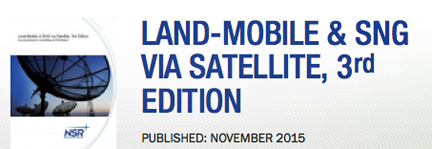[Satnews] NSR's Land-Mobile & SNG via Satellite, 3rd Edition (LMvS3) report forecasts commercial land-based SATCOM nearly doubling to reach $2.2 billion by the end of 2024.
Central to this growth projection are trends in Bring Your Own Device (BYOD) connectivity, new form factors and HTS capacity significantly reducing bandwidth cost. And for all markets, MSS players stand to support the lion’s share of market opportunity.
The land-mobile via satellite market is largely dominated by L-band service providers and operators; with new form factors such as hotspots and consumer-oriented handhelds leading the market growth.
The market is now in full swing leveraging the BYOD trend, which will diversify products towards more consumer-oriented solutions such as hotspots and address demand for mobile users’ personal electronic devices in remote regions.
More form factors are coming in the short-term such as consumer handhelds, sleeve-type products, push-to-talk phones and lighter ‘carry-on’ flyaways giving a boost to this traditionally slow-moving market. On top of these, hybridization of satellite with terrestrial infrastructure will give way to solutions that offer higher speeds, more bandwidth and an increased level of integration with everyday communications devices such as smartphones and tablets.
HTS capacity also stands to play an important role in market growth, as new GEO-HTS and Non-GEO-HTS capacity is well on its way to reducing bandwidth cost per bit, which is deemed vital to the land mobile satcom market. Higher throughput is core requirement of land mobile users, and the widespread reduction in capacity pricing can only serve to support this highly price sensitive market.
Executive Comment
“This diversification in portfolios allows MSS operators, and their distributors, to reach new markets and complement current offerings with higher bandwidth,” said Claude Rousseau, Research Director at NSR and report author. “The traditional players are MSS operators with new, higher bandwidth services and hybridization in both FSS/HTS and terrestrial wireless networks to help boost growth in a key satellite market."


